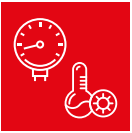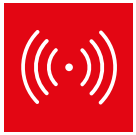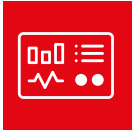An end-to-end IoT solution consists of the following components:
 |
Sensors and actuators: This is a part of the system that directly interfaces with the physical environment. Sensors measure the state of the environment and interpret the same as digital data. On the other hand, actuators activate a physical change in the measured environment. Advances in the field of electronics in general and semiconductors in particular has led to the availability of a wide range of sensor and actuators which are highly efficient and yet very compact. |
 |
Wireless connectivity: Sensors and actuators are typically installed in devices with limited access to the digital world. Consider, for example, a temperature sensor mounted inside an industrial boiler. Wireless connectivity provides in addition to many advantages the reachability necessary for such applications. A wide variety of standard as well proprietary wireless connectivity solutions are available today. Several factors including range, throughput, spectrum regulations, local statutory requirements and power budget determine the choice of wireless connectivity solution. Modern embedded designs usually combine the above components into a single embedded device interacting with a gateway. |
 |
Gateway device: A gateway device acts as a bridge between the physical and the digital worlds. It interprets the multitude of wireless connectivity protocols, collects the data and forwards the same in a format understood by entities above. In certain applications the gateway device also performs basic analytics like threshold detection. |
 |
Data platform: This is the platform where the data is finally stored and presented for further analysis. Options here can range from a local database to cloud server with redundancies. The data platform enables the use of technologies like Artificial Intelligence (AI) and Machine Learning (ML) to perform advanced data analytics that generates value additions to the application. |
 |
User application: This is the interface between the human users and the digital world. Here the status of the observed environment is presented in human readable format. The user can take the necessary actions by interacting with this application. |

If you want to read more find here the whole Product Guide.


Top Comments